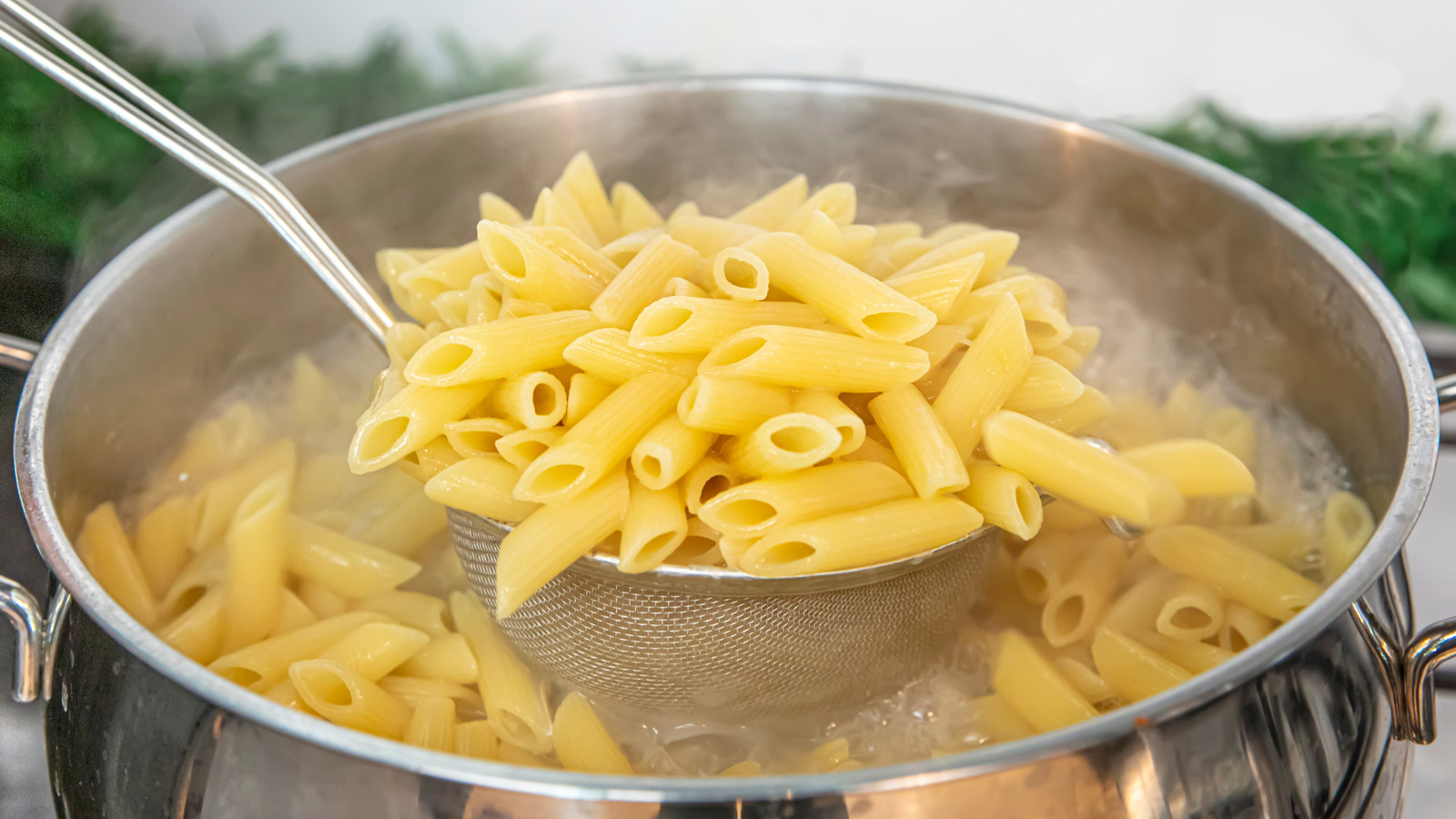We’re forever in pursuit of foolproof tips for making restaurant-worthy pasta at home. One of the most crucial deciding factors between “meh” pasta and “wow!” pasta is, of course, texture. You want to be able to tell the exact moment when your pasta is perfectly al dente: firm but flexible, with some satisfying bite to it. Overcooked, it’s soggy; undercooked, it’s crunchy. It’s no wonder the pasta chefs among us have tried all manners of things to magically identify that al dente moment. We’ve been throwing things at the wall and seeing what sticks — literally. The quest for masterfully cooked pasta has led us to believe that if you throw noodles at the wall and they stick, they’ve been cooked just right. But not only does this technique look and feel silly, it’s also bogus.
The problem is pasta will stick whether it’s indeed perfectly cooked — or undercooked, or overcooked. Not very helpful, is it? Pasta is made of starch molecules bonded by proteins, and when you cook pasta, those starches take on water. However long it’s been in the boiling pot, pasta will have some presence of sticky moisture that will help bind it to the surface where it’s been chucked. Plus, other factors abound: Pasta made from different starches can be more or less sticky, water that’s not hot enough may cause pasta to be even stickier and clump together, and even your wall plays a role, with more textured finishes being easier to stick to.
Where pasta-throwing comes from and what to do instead
It’s hard to trace where pasta-tossing actually comes from — perhaps a food fight that accidentally resulted in flawlessly al dente noodles? There’s a mention of it in a 1946 cookbook, and it seems to be a trick that’s been passed down through generations of home chefs. But when it comes to helpful tips for game-changing pasta, this is one you can forget. Instead, nothing beats breaking a noodle in half and using the senses of sight, touch, and taste to assess.
To cook pasta right to that dreamy al dente moment without redecorating your kitchen, start by letting it hang out in that boiling water for one or two minutes less than the package suggests. This may mean anywhere from about six to nine minutes, and it’s a good idea because the pasta will keep on cooking a bit even after it’s been removed from the pot — if you’re cooking it in sauce, too, knock another minute or two off that initial time. Then, take a noodle out and half it. You’ll be able to feel if it’s just the right balance between soft and firm. Inside, al dente pasta may have just the subtlest hint of white at its core — any more and it’s undercooked. Take a bite and check for toothsome chew, and you’ll be able to judge how well it’s cooked according to your exact preferences.





